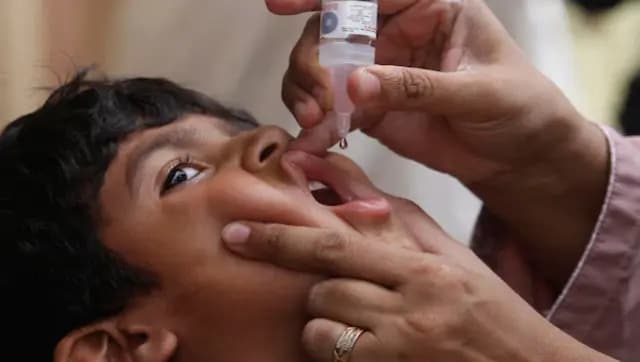In the intricate tapestry of global health challenges, one adversary stands out for its elusive nature and the potential for devastating consequences—polio. The recent resurgence of polio cases in regions that had previously seen its decline and its persistence in areas with ongoing transmission serves as a stark reminder that this ancient disease continues to pose a threat to our world. The battle against polio requires a united front, unwavering commitment, and an unyielding dedication to securing a safer and healthier future for our children. In this comprehensive exploration, we delve into the challenges, strategies, and collective responsibility needed to eliminate polio once and for all.
A Glimpse into the Polio Challenge
The resurgence of polio cases in areas that had previously triumphed over the virus is a sobering wake-up call. This resurgence sheds light on the vulnerability of health systems and the critical importance of sustained vaccination efforts. Polio, often targeting children under the age of five, has the potential to cause severe health repercussions, including paralysis and even death. The battle against polio is far from over, and its complexity demands a renewed sense of urgency and collaboration.
Pioneering Efforts and the GPEI
Amidst the challenges, a ray of hope emanates from the Global Polio Eradication Initiative (GPEI) and the relentless dedication of various stakeholders. Through tireless efforts and strategic vaccination campaigns, wild poliovirus incidences have plummeted by over 99% since 1988. The commendable work of the GPEI, in partnership with governments, organizations, and communities, underscores the potential for collective action to combat even the most formidable adversaries.
Challenges Hindering Eradication
While significant progress has been achieved, challenges persist in the path towards a polio-free world. The impact of the COVID-19 pandemic and local disputes has led to disruptions in routine pediatric immunizations, leaving millions of children vulnerable. The emergence of a segment labeled as “dose zero” symbolizes the urgency to bridge gaps in vaccination coverage and ensure access to essential medical care. The risks are particularly grave for those who remain unvaccinated, threatening the strides made in global public health.
Pivotal Role of Vaccination
The cornerstone of the polio eradication strategy lies in vaccination—the most effective shield against the virus. As the world grapples with evolving health needs, it is imperative to prioritize consistent vaccination efforts. A comprehensive implementation plan, grounded in prevention, awareness, and community engagement, is essential to mitigate the risk of polio resurgence. The GPEI’s innovative approach, aiming to achieve polio eradication by 2026, highlights the resolve to conquer this ancient adversary.
A Blueprint for Success
To safeguard the future and prevent polio resurgence, multifaceted strategies are imperative. Emphasis must be placed on raising public awareness, facilitating access to zero-dosage vaccines for children, and fortifying health care infrastructure. The momentum garnered through COVID-19 vaccination campaigns should seamlessly transition to polio immunization, reinforcing the commitment to comprehensive healthcare solutions.
The Vital Role of Vaccination Schedules
Guided by expert recommendations, such as the Advisory Committee on Vaccinations and Immunization Practices of the Indian Academy of Pediatrics (IAP ACVIP), vaccination schedules hold the key to a polio-free future. From the administration of the oral polio vaccine (OPV) at birth to the sequential series of inactivated polio vaccines (IPV) at different intervals, completing the recommended doses is crucial. This holistic approach ensures maximum protection and a robust defense against poliovirus.
Collective Responsibility: An Imperative
The fight against polio necessitates collective action that transcends borders and boundaries. As witnessed through global health initiatives, even isolated occurrences can trigger ripple effects that impact communities far and wide. The fragility of a polio-free world underscores the importance of unity, cooperation, and sustained commitment to vaccination efforts.
A Pledge for a Healthier Future
In commemorating World Polio Day, the call to action resounds with vigor. The goal of a polio-free world is not an individual endeavor; it is a collective pledge to safeguard the well-being of our children and future generations. As we navigate the complexities of global health, let us reaffirm our commitment to eradicating polio and fostering a world defined by health, safety, and prosperity.
As the journey continues, we stand united in the pursuit of a polio-free world—a world where every child can grow, learn, and thrive without the shadow of this ancient disease. The path ahead is illuminated by the resolve of individuals, communities, and organizations dedicated to shaping a brighter and healthier future for all.







